A DIY Guide to Art Therapy
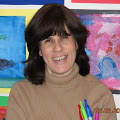
 Photo by
StockSnap
Photo by
StockSnap
Have you ever felt anxious about starting open-ended tasks?
Do you feel lost without a step-by-step guide for new projects?
How about a blank canvas? Does it throw you into panic mode?
Regrettably, this has been the story of my life.
Getting the perfect shot as a portrait photographer, creating a flawless website as an Internet marketer or even seeing a blank canvas in an art class — any new endeavor that had no template would make me panic.
Teaching What I Needed To Learn
Teaching children showed me how my own growth had been stunted. When I became a preschool teacher, I was often involved in children’s art activities and saw how great these activities were for their growth. They were allowed to create on their own, and I saw how much that helped them develop confidence and initiative.
These were qualities I never acquired, and witnessing their creative activities made me realize how different my own kindergarten arts and crafts were.
My kindergarten teacher was quite rigid. Instead of giving us art that would make us think and develop confidence, she had us copy models of projects she would prepare. (Sound familiar?)
There was no choice involved, and we had to copy steps without any deviation.
As I began teaching preschool, all the childhood memories flooded back. I realized how these kind of arts and crafts projects can truly stunt your growth as a child.
Kindergarten is the place where your school life begins. Not being trusted at such a young age to create on your own and only copy the teacher can spill over into many areas of your adult life.
I realized my anxiety of needing things to be right came from this. It affected my ability to be an independent thinker and do things without exact instructions.
Letting Go of Anxiety
Art is the perfect way to free yourself from anxiety, even if you don’t have a creative bone. I always loved art and eventually became an art teacher.
I loved seeing the kids develop through the art projects, which were more focused on process.
In process-focused art, the art I give kids, you don’t worry about what you’re creating. The process of creating is more important than the result.
The beauty of this type of art is that you don’t need to be all that creative to get into this. Even if you can’t draw a straight line, you can still do this. The whole idea is to let go of the outcome.
But, even as I was teaching, I still felt anxious whenever faced with a blank canvas. I still felt panicked whenever I had to do something without clear directions.
It struck me that if this process-focused art was helping the kids develop and grow, it might still help me as well. I figured that by getting involved in art where the final product is so open-ended, it might help me lose my anxiety.
I started researching the topic of process art for adults, and I discovered some fascinating information.
Art as Therapy
Barbara Diane Barry writes in her book Painting Your Way out of A Corner that she saw focusing on the process of art making affects other areas of your life. It can give you a safe space to explore new ways of thinking and a way to work through feelings getting in the way.
The psychologist Albert Bandura said that doubts in your creative ability can be cured by guiding people through small successes. The Creativity Cure, written by Carrie and Alton Barron (both MDs), talks about how you can recover from anxiety, depression, lack of energy and a whole slew of complaints through creativity.
I was sold, but I was also still petrified. I desperately wanted to try, but I couldn’t get myself going.
To give myself a push, I started a mixed media art class at my home with a few older children, and I joined as a student and teacher. Mixed media art is process-only art for adults. You spend time exploring materials and techniques without any pressure to make or draw something.
I was still incredibly anxious sitting in front of a blank page, but with time, I slowly relaxed. I learned that by getting involved in mixed media art, it takes you back to your childhood and gives you experiences with process-only art you never had.
By concentrating on the process instead of the result, you can lose your anxiety and fear of making mistakes, and calm envelops you. This is what happened to me, and it can happen to you too.
What Process-Only Art Will Do For You
Mixed media art can have many benefits for your personal growth. The following are just a few:
- You will no longer feel like you need to get things exactly right.
- You will feel more competent and better able to come up with creative solutions.
- You will lose your fear of the blank canvas.
- You will free yourself from anxieties, worries and ruminations.
- You will gain confidence as you improve your abilities.
- You will take more initiative in your personal life.
As you learn new techniques, you take small risks that lead to small successes. This will lead you to a much greater feeling of well-being, because problem solving and troubleshooting, which are big parts of art, are not only creative but also transformative.
What You Need to Get Started
It’s not easy to go into unfamiliar territory; I will be the first to admit it. I sat around for years too frozen to take the first step. But just remember — you don’t have to be creative to do this; you just have to create.
Mixed media has certain basic steps and principles that you follow with an enormous amount of leeway.
In creating any mixed media piece the first thing you do is choose a background for your artwork (often called a substrate). Here are a few to get you started:
- Heavyweight paper
- Illustration board
- Cardboard
- Canvas
Then you must decide how you will cover this background. There are loads of books and info online to help you choose any number of fun surface treatments.
You will definitely feel like a child again as you create these cool, totally abstract backgrounds, mostly with paint. You will probably need small tubes of either watercolor or acrylic paints, (you can find really cheap beginner sets), as well as a brush or two.
After the background comes the decision as to which collage materials and embellishments you would like to use. Then you need to select a type of glue you like. You also get to use stencils, stamps, confetti, glitter glue, markers, natural leaves and flowers as well to enhance your artwork.
You can use a lot of materials from around your house for mixed media. Here are just some of the easy to find materials:
- Aluminum foil
- Cupcake holders
- Candy wrappers
- Receipts
- Yarn
- Ribbons
- Cotton balls
- Q tips
Many mixed media artists use cutouts from newspapers and magazines to add to their artwork and sometimes even base an artwork on an image from a magazine.
Give Yourself a Theme
I’m going to give you a theme that will make it easier to begin. This will add a bit of structure to the activity. You don’t need to have a theme if you don’t want to, of course.
Your first theme is flowers. It can be a flower garden, someone holding flowers, flowers on a windowsill, flowers in a vase or a flowerpot, etc.
You can start with flowers from a magazine or make flowers from tissue paper or cupcake holder or any one of the materials you have collected. The only rule is that flowers are the theme as you can add other elements to the artwork as well.
So let’s get started.
- Find a piece of cardboard, canvas or anything thicker than paper to use as a background.
- Take your watercolors (or other paints) and squeeze a few colors onto the paper and paint the whole paper, leaving it quite wet.
- Take a piece of saran wrap or wax paper and press it into the wet paint. As you do that, crumple it on top of the paint and leave it to dry all crumpled up.
- When dry, remove the wrap and you will have a very cool pattern emerge that will be your background.
- Choose an image from a magazine that will start your flower theme off, or begin creating your own flowers with your materials.
- Add any stamping, stenciling, glitter, markers or anything else that can enhance your artwork.
Remember these are just suggestions to get you going. You may find yourself a bit anxious as you begin if you don’t know “exactly” what to do. But you will see as you start finding more things around your house that you can use for your flower art how much fun it turns out to be.
Getting involved in this hobby is not only fun, enriching and relaxing, but it will also lead you to great personal growth.
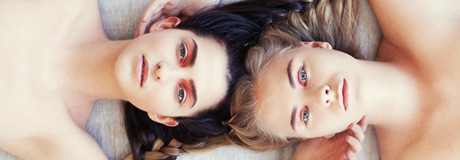

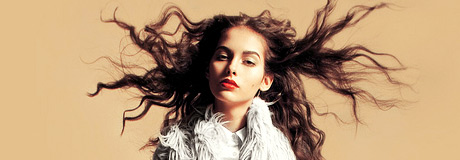
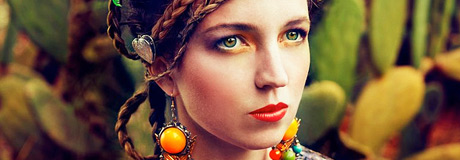
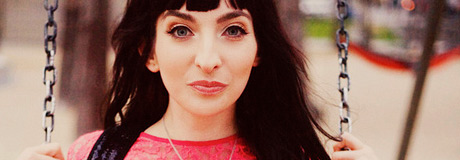
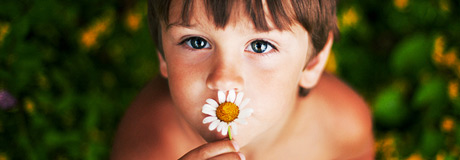
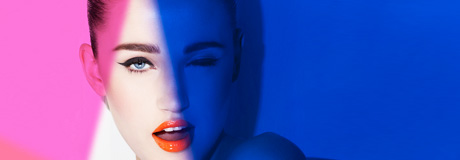





Thanks so much for publishing this post. There is one thing that I wanted to mention that was not listed…I have a free guide called 25 exercises to rekindle your natural creativity…if you go to http://www.creativityreignited.com you can pick it up there